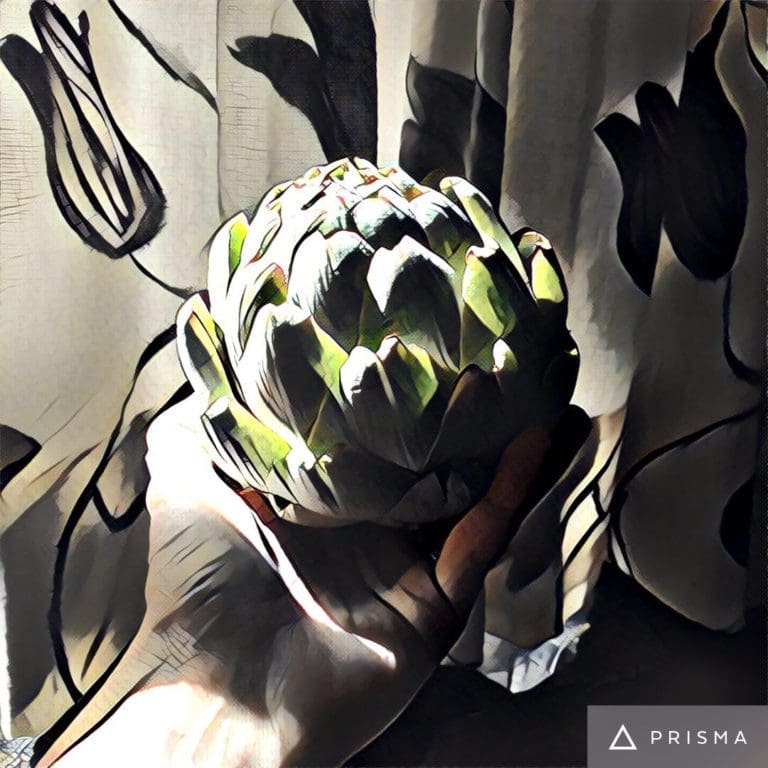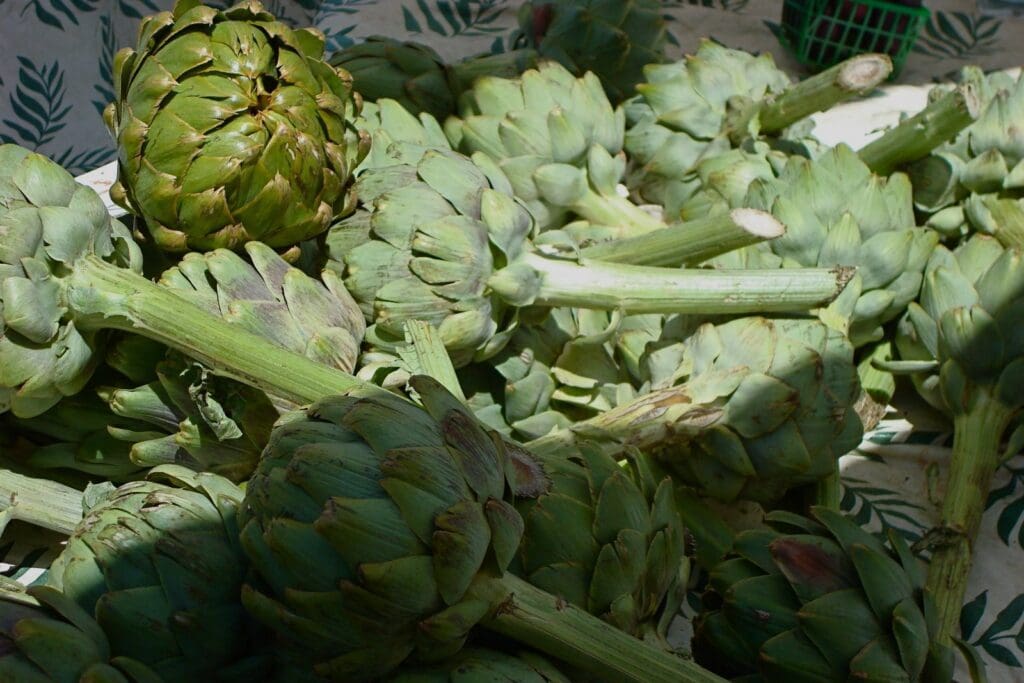
Artichokes, artichokes, artichokes! There is nothing better than a delicious and perfectly cooked artichoke.
My family comes twice a year to visit from Oklahoma, and as they are driving that 27-hour drive, their excitement grows with anticipation for the fresh produce they’ll see along the way. As they drive closer and closer, Mom and I discuss all of the delicious things that are available in California but not in Oklahoma. One particular item that we all salivate for are artichokes. My hat goes off to the person who thought to first eat this strange and seemingly unrewarding vegetable. It is truly delicious treat.
It still amazes me when I come across an adult that has yet to eat an artichoke. Better still is watching someone eat an artichoke that has never done so, and listening to that person describe how to scrape the MEAT off of the leaves. It is a priceless moment.
When buying an artichoke, make sure that it is heavy for its size, and that when you squeeze it, the leaves make a “squeak” sound. If you are noticing that the leaves have brown tips, this could be an indication that the artichokes have had a bit of frostbite, and might not taste as fresh.
Health benefits of artichokes: Native to the Mediterranean region, artichokes are extremely good for you. They contain only 25 calories, are fat free, and are a good source of vitamin C, folate and dietary fiber. Artichokes are a delicious part of any healthful diet, and taste great in just about anything. Enjoy experimenting with them!
Cooking artichokes: Artichokes need to be simmered in very acidic water for no less than 45 minutes and can actually cook as long as an hour and fifteen. The test to check for doneness is two fold- 1. Pull a leaf off of the artichoke, if it releases easily it’s a good sign it’s done, 2. use a pairing knife and pierce the heart of the artichoke. If it goes in easily the artichoke is done.
What to do after you’ve simmered the artichoke: Remove the artichoke and rest it leaves side down on a plate or a cookie sheet so the water can fall run out of all of the nooks and crannies. Once the water is gone you can either serve or move forward with further preparation.
How to serve an artichoke: Artichokes can be served right after they’ve finished simmering or you can cut it in half (cut starting at the base/stem rather than starting at the leaves). Once the artichoke has been cut in half remove the tiny hairs and spiny inside by scooping it out with a spoon. Again you can serve the artichoke cut in half or take it one step further and you can grill it. Spray the artichoke halves with nonstick spray and season them with salt and pepper. Grill for 3-4 minutes and serve hot.
Dipping sauces: Salted butter is my favorite but also try herbed aioli, really good mayonnaise or olive oil and salt.
Try some of our favorite artichoke recipes: steamed artichokes and fried artichoke hearts.
